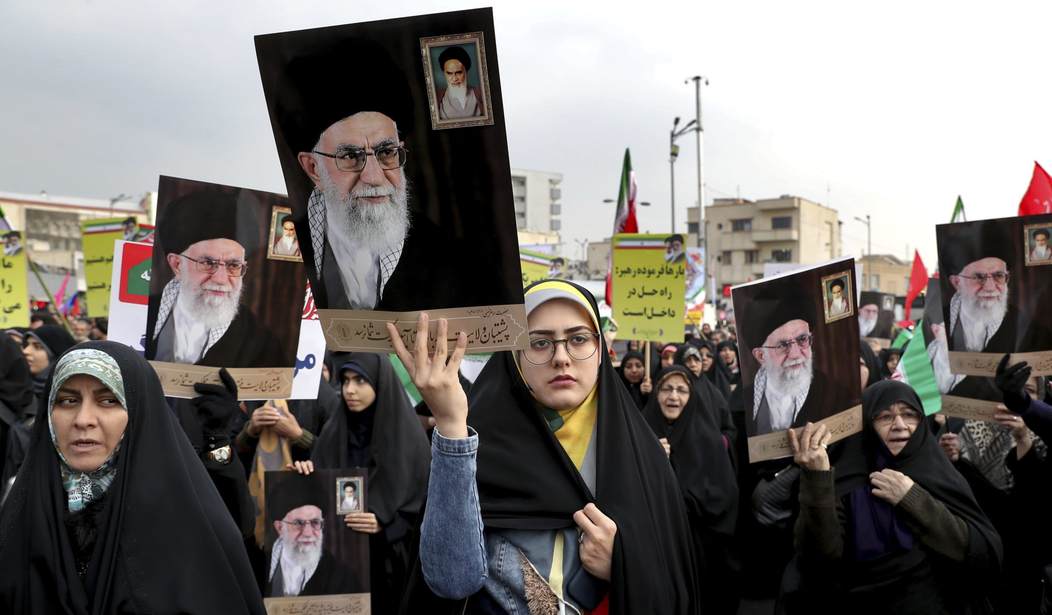Iran’s people barely can scrape together enough calories to keep body and soul together in the big cities, while entire parts of rural Iran are emptying out as rivers and wells go dry. Things are so bad that the number of babies born in Iran has fallen by nearly 25% in the past five years. Only Venezuela is worse off — but the wicked Maduro government remains in power. Regimes that are willing to shoot their people dead in the streets (as Iran shot 1,500 protesters last November) can cling to power even under desperate material circumstances.
As I wrote at Asia Times yesterday:
One average salary pays for a small apartment outside the center, utilities, enough calories to keep body and soul together, and bus fare, which is subsidized. Throw in cell phone service, clothing, fruits and vegetables, and one or two meat meals a month, and an Iranian couple will require two average salaries. According to official data, food price inflation was 28% year-on-year as of December.
Medicine is another matter. Some imported items, for example, insulin pens, can’t be found at pharmacies in some provinces, according to a Persian-language report by IRNA. The Chancellor of the University of Isfahan told the national news agency that imported medicine such as chemotherapy drugs was in short supply, but that most other medication was available.
Import controls to spare foreign exchange have put autos outside the range of most Iranians. A VW Golf costs the local-currency equivalent of $48,000, according to Numbeo, or about 14 years’ average pay.
Reduced consumption has taken a toll on Iranian family life. According to the Tehran Times, citing Mohammed Javad Mahmoudi, head of the committee on population studies of the Supreme Council of the Cultural Revolution. According to Mahmoudi, the number of babies born in Iran fell by nearly 25% between 2015 and 2019.
That short-term decline in absolute numbers of births is unprecedented outside of wartime. The number of Iranian women of child-bearing age increased slightly over the same period, so the collapsing birth rate clearly reflects decisions not to bear children.
As I have reported in the past, Iran faces a demographic crisis over the next two decades as its population ages rapidly. There are five prime-age Iranians supporting every Iranian over the age of 65, but by mid-century, the ratio will collapse to just 1.6 to one. Strangely, the Iranian authorities have reported an increase in the “total fertility rate,” namely the estimated number of children that the average woman will bear during her lifetime. The increase evidently is due to optimistic assumptions about the future rather than observed behavior in the present.
Iranians face desperate conditions, if not actual hunger, due to the effect of economic sanctions. Add to this the long-term effects of mismanagement of the country’s scarce water resources. Afshin Shahi wrote recently in the Journal of Asian Affairs: “Approximately 97% of the country is experiencing drought conditions. Due to gross water mismanagement and its damaging impact on the country, Iran faces the worst situation in the water resources of any industrialized nation. Tens of thousands of villages have been deserted and most of the major urban centers have passed their limits to absorb new rural migrants. Some officials predict that in less than 25 years, 50 million Iranians would be displaced from their current homes because of the pressing ecological conditions.”
The comparison to Venezuela is sadly instructive. Desperation can strengthen a murderous regime rather than weaken it, as I explained last February after the Trump administration unwisely appointed Elliot “Export Democracy” Abrams as its point man for Venezuela.
Venezuela is following the ugly pattern of Latin American civil conflicts during the 20th century…. This is a depraved and wicked government of narco-socialists, but it will not be easy to dislodge.
Latin American revolutions as a rule result in prolonged, bloody wars of attrition. The civil war referred to as “La Violencia” in Colombia lasted from 1948 to 1959, killed about 300,000 people, almost three percent of the Colombian population, and displaced more than one million. Unspeakable atrocities including crucifixions were widespread. The Mexican Revolution of 1910 to 1920 killed one million of Mexico’s 20 million population. The El Salvador civil war of 1980-1992 killed about two percent of the population but displaced a quarter of the people.
….In a starving country where the government controls all the food, the cost of bribing a key military cadre is relatively low. The regime’s bribed stooges won’t give in easily, because everyone knows who they are.
The obvious alternative to Iran’s Revolutionary Guard is the regular army. One hears rumors about discontent in the officer corps, but no real information. The Obama administration destroyed America’s intelligence assets on the ground through a combination of malfeasance and incompetence (Iran cracked the CIA’s system of communicating with its agents and rolled up its network several years ago).
Anything we can do to undermine the wicked mullahs of Tehran, we should. But we should have no illusions that the job will be easy.











Join the conversation as a VIP Member